Nothing says winter adventure like heading up to the mountains to downhill ski with the family, but the idea of planning a family ski trip for the first time can be a little intimidating. Getting all the right equipment, finding the perfect ski destination, and learning how to ski can take a lot of research.
Plus, it’s not the most budget-friendly outdoor activity for families, so you want to save where you can.
(This post may contain affiliate links. Please read our disclosure policy for more information.)
These are all the tips for beginners we wish we had when first starting out. It’s everything first-time skiers and boarders need to know for an epic winter adventure on the slopes this winter.

We’re focusing on things to know about skiing for the first time rather than teaching you how to ski. We’ll leave that to the pros! If you want a sneak peek at the correct techniques taught during beginner ski lessons, this is a great intro video:
Planning Tips for First-Time Skiers and Boarders
1. Decide Whether You’ll Ski or Snowboard
There was a time when this wasn’t even a question. There were few (if any) snowboarders on the mountains, and lessons and information were geared just toward skiing for beginners. Things have since changed, so you’ll want to consider boarding as an alternative to skiing before arriving at the ski resort.
There isn’t a correct answer – it’s a personal preference. We know families who have their kids master skiing before trying out snowboarding, while others set right out with boarding.
In our family, the kids did one season on skis and have thrived on snowboards since then. Dad switches it up every year, and Mom has stuck with skis the entire time. Any way you do it, skiers and boarders ride lifts and hit the trails together.
2. Choose the Right Ski Destination
Ski destinations can vary in their services, amenities, and onsite activities. Deciding what will make the perfect ski adventure for your family will help you pick the right place for skiing for the first time.
Ski Resort vs. Ski Area
Ski areas offer the basics for a day on the mountainside. Equipment rentals, lessons, dining options, and a ski shop are almost always provided. There is often a ski lodge with storage for personal items, restrooms, and a place to warm up by the fire.
Ski resorts are perfect for family ski vacations and a first-time skiing experience. Like a hotel resort, ski resorts have almost everything you need in the ski village: shops, restaurants, lodging, and winter activities for non-skiers (like snow tubing, ice skating, or even cross-country skiing).
What to Look For in a Ski Area for Your First Time Skiing
Choosing your location based on trail difficulty will give you more options during your ski trip, one of the skiing tips for first-timers we still use today. We don’t want to spend the day with few trail options, so we look at how many acres are open for our skill level.
Ski runs are graded on levels of difficulty:
- green circle (the easiest)
- blue squares (intermediate)
- black diamonds (runs for the expert skier are the most extreme).
Ski area websites often show the total number of skiable acres and the percent of trails or acres by each difficulty level (like this one for Keystone Resort). New skiers want mountains with plenty of easy runs, so you don’t get bored on the same few trails all day.
Pro Tip: Search “mountain information” or “mountain stats” to learn more about the trails. All of our favorite family-friendly Colorado ski areas have this information on their websites.
3. Plan for the Right Time of Year
Christmas break might sound like the perfect time for a ski holiday, but here in Colorado, the snow conditions are not quite as perfect as they are from late January through early March.
Going too early in the season may mean only advanced terrain is open. Late-season conditions can be slushy and icy, and neither is ideal for beginner skiers.
4. Learn the Basic Ski Lingo
Navigate through your day of skiing for the first time with a basic knowledge of common ski lingo. This will help you ask questions (and understand the answers), steer you clear of runs you don’t want to be on, and give you some overall confidence.
5. Schedule Skiing Lessons
Even seasoned skiers benefit from a ski lesson here and there. Taking a ski or snowboard lesson to learn the proper techniques before heading out on your own makes skiing a better experience for kids and adults.
There are generally three options for lessons, fitting different budgets and goals.
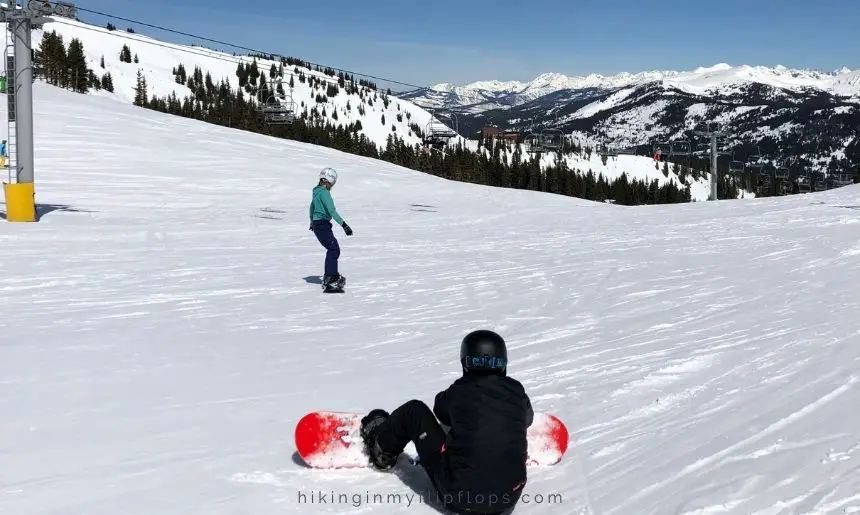
- Group lessons can be the least expensive way to pick up some new skills, but larger groups mean less individual attention from ski instructors. It’s also not the best option for experienced skiers.
- You’ll get full attention from the ski instructor with one-on-one ski lessons, and the instruction will be tailored to your skill level. These can be expensive, but they can be worth it if you’ve invested in a week-long ski vacation and want to ensure you’ll feel confident on more levels of terrain.
- We think private lessons for groups are the best way to go. You’ll get more targeted attention than group lessons, but it’s more budget-friendly (per person) than one-on-one.
We added discounted lift tickets to our half-day lesson. We spent the afternoon practicing the skills we learned in the morning.
6. Prepare for Storing Personal Items
It might seem a little ahead of the game to plan this in advance, but the day will go more smoothly if you do. Personal items need a place to go while you ski or need to be carried with you.
- Small items, like tissues and lip balm, can be stashed in the pockets of your ski pants or jacket, so you have them when you need them.
- Ski with a small backpack if you have too much to store in your pockets. This can get a little annoying on the lifts but is otherwise an easy option. Choosing a backpack that holds a water reservoir makes it really easy to stay hydrated.
- Keep personal items in your car. Lunchtime picnics in the parking lot are actually kind of fun. This is easier when you’re able to park reasonably close to the lifts.
- Rent a locker in the lodge if there is too much to carry on the slopes with you but don’t want to take the time to trudge back to the car (which may require a shuttle ride). The cost varies by locker size and ski resort, but we generally pay $10-20 per day.
7. Make a Packing List
With a day full of activity and unpredictable weather conditions, you don’t want to forget anything you need. To make sure the entire family stays safe and comfortable all day long, plan your ski trip packing list ahead.
Your list will include items such as:
- warm clothes
- waterproof winter gear (jacket, pants, gloves)
- personal items (sunscreen, lip balm, tissues)
- ski and snowboard equipment
Layers are the Key to Comfort
Believe it or not, high elevations in the mountain west can get HOT when skiing on sunny days. By lunchtime, we were shedding our layers on a sunny day in Colorado, even though temps were in the 10s.
Start with a base layer, then add a mid-layer (comfortable pants and long sleeves will do). Add your ski jacket and snow pants on top, and you’ll stay warm and dry. It’s easier to shed extra layers than freeze on the mountain.
Pro Tip: Some areas offer winter gear rentals (waterproof jackets and snow pants, so you’ll only need to remember to bring warm clothes and accessories like base layers, wool socks to keep your feet warm, and ski or snowboard gloves.
See our complete ski trip packing list here.
Money-Saving Tips for First-Time Skiers
8. Free Ski School for the Kids
The Epic SchoolKids Pass program is the best place to start. The program is available at Vail Resorts in Colorado, Utah, and to residents of Washington state and British Columbia at Whistler Blackcomb (but hurry – the 2022-23 season deadline to register is Oct 9!). The program offers free passes, one beginner lesson, and one equipment rental (excluding goggles) for kids in Kindergarten through 5th grade.
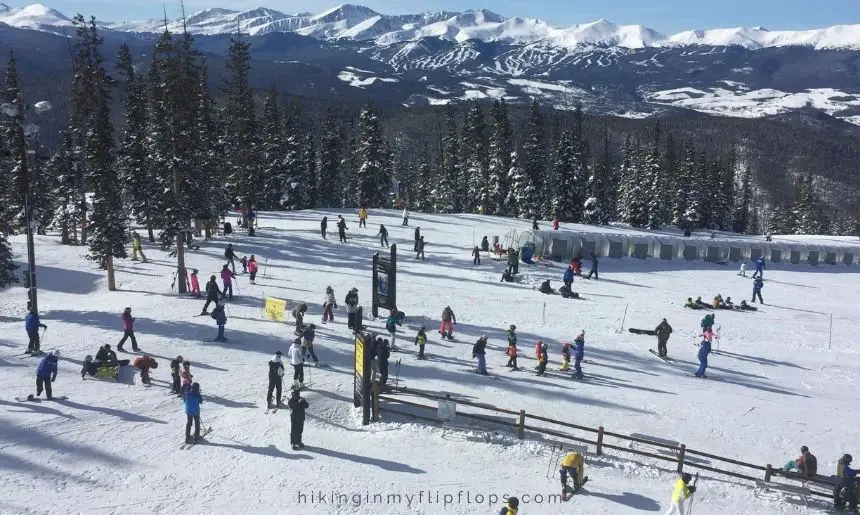
Pro tip: When the kids are signed up for ski school, parents who aren’t skiing may get a discount to ride the gondola to watch the kids. Ask at the information desk or ticket window.
9. Pack a Lunch and Snacks
Buying lunch and snacks at the ski lodge can get expensive, so packing your own lunch can save you a lot of money. You’ll see many people pack their own food for the day, so you won’t feel out of place. If you want to maximize your time on the mountain, carry lunch with you in a backpack to avoid the haul back to your car in ski boots.
Bonus: even if you’re not on a budget, lines for food get long at lunchtime, so packing lunch saves time too!
Pro Tip: Bring insulated bottles (like those from Hydro Flask or S’well) of hot chocolate or tea to warm you up at the end of the day.
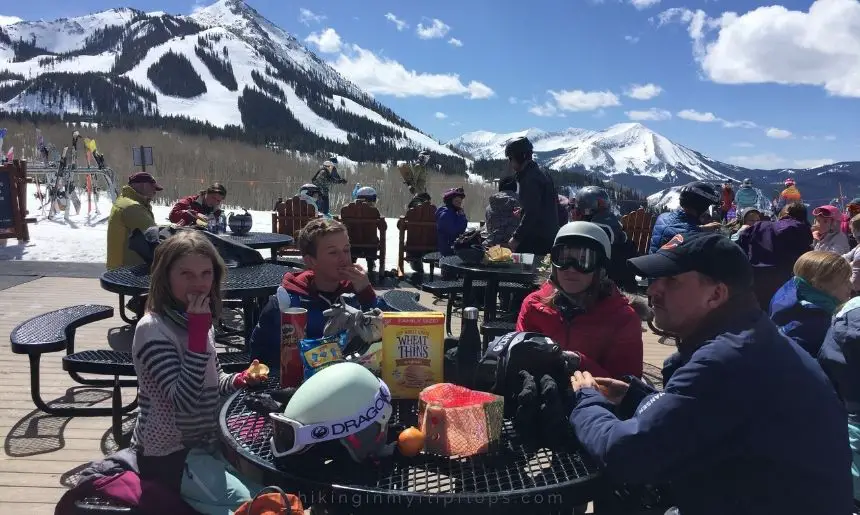
10. Rent Ski and Snowboarding Gear
One of the best money-saving tips for first-timers is to rent gear rather than spend a fortune on skiing equipment.
- Rentals from the resort are more convenient (some even deliver right to your room the night before) but can cost more.
- We have found rentals of the same equipment at less than half the cost from ski shops offsite. Check around for rental prices ahead of time.
Pro Tip: Rental shops often don’t provide ski goggles, but we recommend purchasing a pair even if you plan to ski only a few times. While they may not seem essential, ski goggles keep sun and snow out of your eyes, making a day on the mountain safer and more comfortable.
Ski Equipment to Rent When Skiing for the First Time
- skis (or a snowboard)
- ski boots (or snowboard boots)
- poles (skiing only; these are often not used with kids who are skiing for the first time)
- ski helmet (if you choose to buy helmets for the family, our kids like the helmets from Giro, and we like the Smith Optics helmets)
Consider purchasing insurance that is offered for any rental equipment. For just a few dollars a day, it protects against any damage to the gear – including minor nicks from rocks in high-traffic areas.
11. Buy Lift Tickets Online
You’ll pay the most when purchasing your tickets at the window. Vail Ski Resort offers a 15% discount when buying passes online, and you’ll save 25% when purchasing online tickets for Copper Mountain.
Save even more by purchasing a multi-day pass. Vail skiers can increase the discount to 20% with a 3-day pass, while those heading to Copper can save over 30%.
12. Take Advantage of Free Parking
It’s tempting to hit those parking lots located right in the villages and gondolas, but you can easily spend up to $50 a day for that convenience.
Free parking is plentiful at most resorts, and shuttles run between parking and the base throughout the day.
Pro Tip: Paid parking isn’t even that convenient. There is still a good walk to the gondolas with all your gear. Ski boots aren’t known for their comfort, so you don’t want to walk any more than you need to.
Arriving at the Ski Destination
13. Start the Day with an Early Arrival
It can take a surprisingly long time to get to the lift in many ski areas from your parked car, and a lot happens before you can get on that chair.
- get all your gear on (ski pants, jacket, boots, etc.)
- pick up a shuttle (at the bigger ski resorts)
- store personal items
- hit the restroom
Pro Tip: If you rent gear at the resort, especially if you have lessons scheduled, make sure to arrive even earlier to get fit for equipment. Otherwise, “first chair” is usually at 9 am, with lifts closing between 3:30 and 4 pm.
14. Drop Off Gear
Many ski resorts have drop-off areas, so you don’t need to lug all the gear on the shuttle. You’ll have 15-30 minutes to unload skis, boards, boots, and anything else you don’t want to carry from the car to the base.
Pro Tip: Use the drop-off zone and a storage locker, so you don’t need to walk as far in ski boots. We wear these insulated booties from The North Face (also available in men’s sizes) around the ski resort.
15. Get Familiar with the Ski Resort and Make Your Plan for the Day
Pick up a map, find restrooms, and get a locker if needed. Look for runs that match your skill level and the lifts needed to get there.
Have an idea of when you want to stop for lunch. It’s also a good time to plan to meet up with the rest of the group – for lunch or après ski – if you’re going separate ways.
Pro Tip: Lifts and runs are intertwined across the mountain, meaning it is possible to get on a chair lift that has access to only the most difficult runs. Plan your routes up and down accordingly.
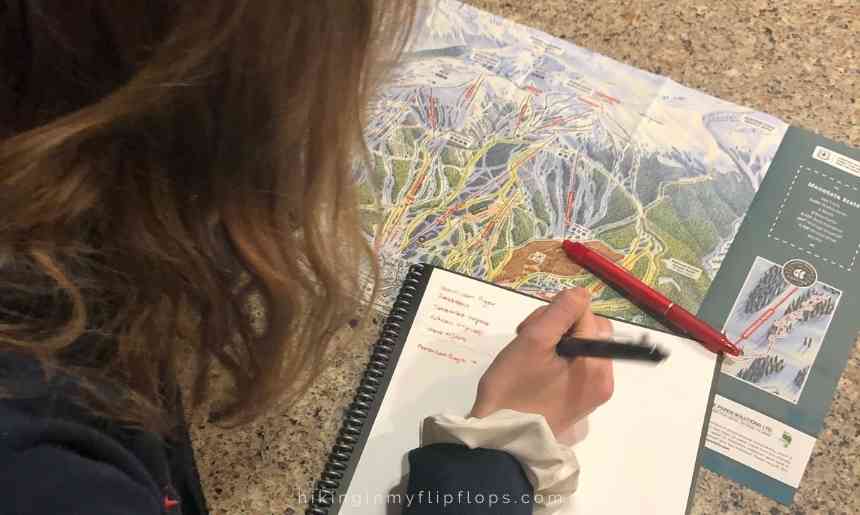
On the Slopes: Skiing Tips for First-Timers
16. Relax and Don’t Fear the Falls
You will fall, and you will have some trouble getting up. The tenser you are, the more this will happen. Keep calm and relaxed, and have that fake-it-till-you-make-it confidence. Before you know it, you’ll be carving turns with fewer and fewer falls.
17. Focus on Two Important Skills
We said we weren’t going to give any skiing tips for how to ski, but in our experience, this one is too valuable to leave out.
There are two skills that will help prevent falls and even injuries when learning to ski.
The first is stopping. Knowing how to stop will help you avoid obstacles on the trail, whether people or trees.
The second skill is controlling your speed. When you can avoid going too fast down the mountain, you are less likely to lose control and fall. Plus, it’s much harder to learn to stop when going at higher speeds.
12. Prepare for the Ski Lifts
The ski lifts can sometimes be more challenging than learning to ski. When you’re new, especially when skiing for the first time, let the lift operator know you need some assistance.
They can give some instruction, slow the chair to make it easier to get on, and radio to the lift operator at the top to slow the chair, so you have time to safely get off the lifts.
19. Choose the Right Trails
Stay on the easy trails (green circle) as a beginner skier. Also, look for less busy trails – these are often found further away from the ski lodge.
Almost all easy trails are groomed, but check to make sure. An uneven snowpack makes it easy to fall.
Our snowboarding kiddos avoid any “traverse” at all costs. These trails have a gentle slope that can make it difficult to get downward momentum – which is especially challenging when both feet are strapped in.
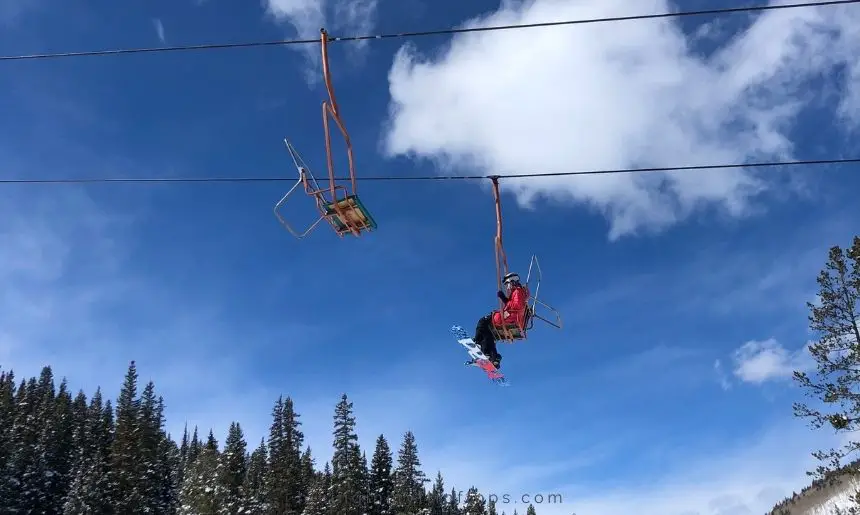
Safety Tips for First-Time Skiers and Boarders
20. Wear Your Helmet
Growing up skiing, no one wore helmets. That’s all changed now and you’ll see even the most advanced skier wearing a helmet. Some resorts require them, and for a good reason. Wearing a helmet has saved countless lives on the slopes. They prevent head injuries if skiers lose control and hit any obstacles (including other skiers or boarders) on the runs.
21. Protect with Sunscreen
There are few things better than a sunny day in the mountains, but that sun beats down hard. Even if the sun is just barely peeking through, slather on that sunscreen to protect your skin. If nothing else, it will prevent weird goggle- and gaiter-shaped tan lines on your face.
22. Follow the Posted Rules
Slow down where marked, stay off closed trails, and watch for those in front of you. These are just a few ski area rules you are likely to see. Familiarize yourself with regulations on the posted signs to keep everyone safe and traffic flowing.
23. Take Plenty of Breaks
Skiing and snowboarding are surprisingly exhausting. You would think that since your equipment is doing most of the work and a lot of time is sitting on the chair lifts, this wouldn’t be the case. Take some time to get out of the sun, hydrate, and relax for a minute to maintain focus on practicing your new skill.
Pro Tip: If your skiing adventure is planned for a few days on the slopes, taking a day off from the slopes is always a good idea. Skiing and snowboarding can take a lot of mental focus, so take time off for other adventures like exploring Ice Castles found in Colorado and other ski regions of the US.
While we have the newbie skier in mind with these tips for skiing and snowboarding, they are really useful no matter how experienced you are. From saving money on your ski holiday to ensuring you are fully prepared as a first-time skier, these tips will help make your days on the mountain even more enjoyable.
Frequently Asked Questions About Skiing for the First Time
Click below to save these tips for first-time skiers for later!

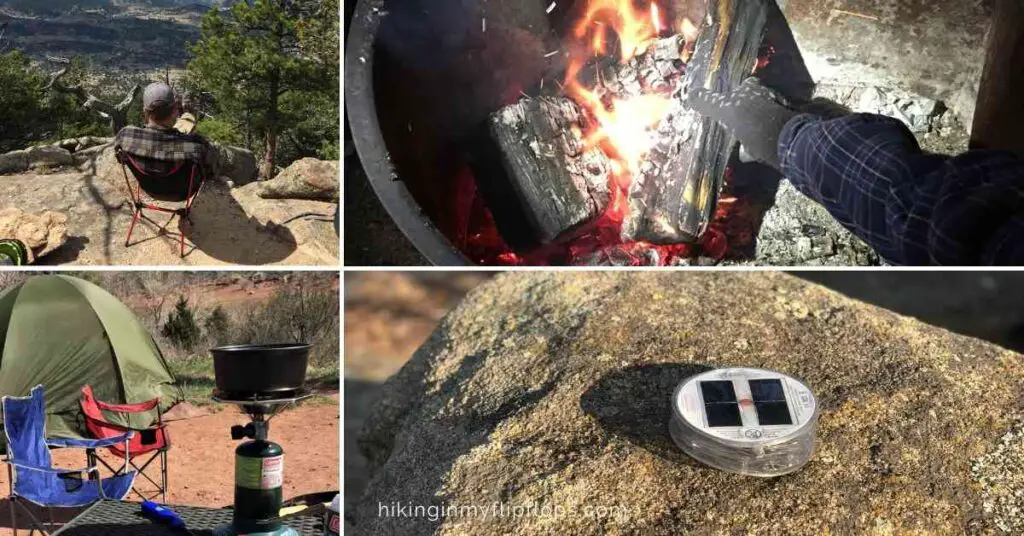
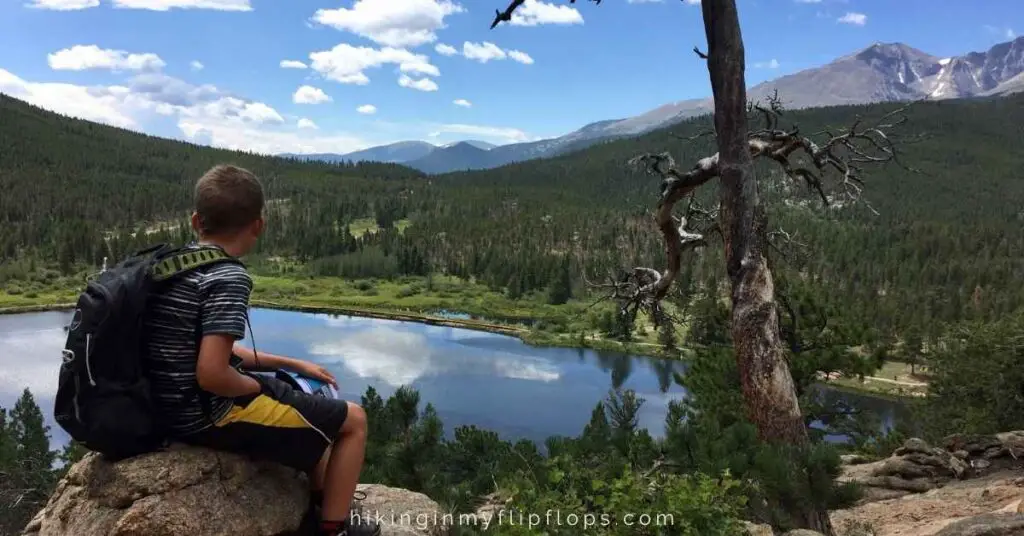
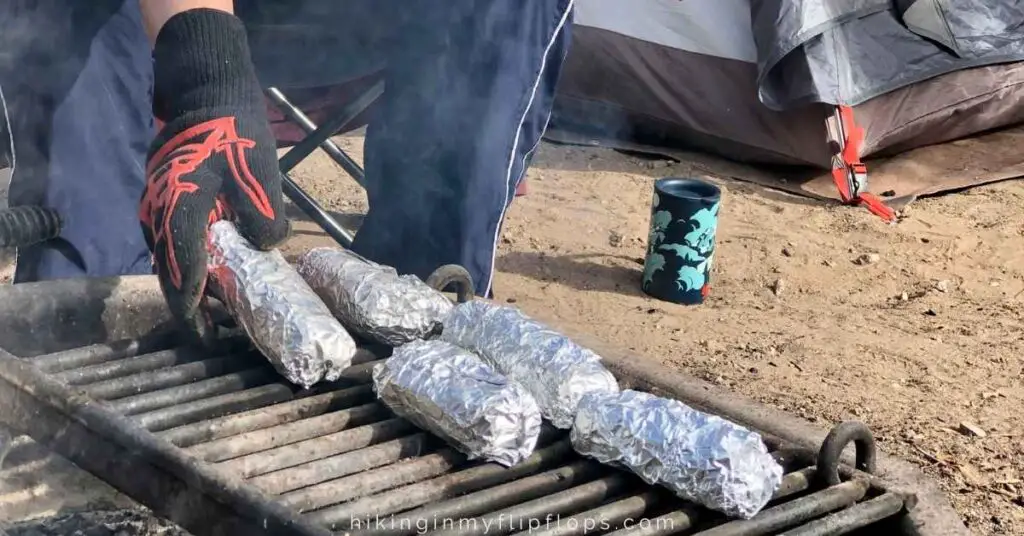

Getting all the skis and gear with little ones can be a nightmare. We use a sled! Load it up at the car and drag it to the lodge. Usually we are able to stash it out of the way near the kid center. It has always been there when we return at the end of the day but you might want to consider the possibility it could “walk off”. Also, a pocket full of candy is a huge incentive for my littles to get on the chair lift ONE MORE time. Have fun!
A sled to haul gear is such a great idea! Yes, we’ve been known to throw in a few motivating treats to get the kids excited for that last run 🙂
Thanks for sharing!
Ooooo! This sounds like fun! Thank you for the recommendations and advice!
You’re welcome! We are so excited for season 2 now that we’ve worked the kinks out!